Anatomies of a Black Box mapping Energy's relationship with AI
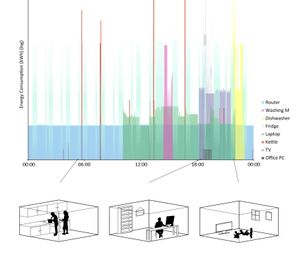
Contribution to Matadero Estudios Críticos. Vol. 2
- Year 2020
- Skills Data analysis, machine learning, research
- Project Link https://freeport.institute/cargo/MEC_Freeport_2020_Anatomias_de_una_caja_negra.pdf
- Collaborators Christopher Page
Project Context: Where AI Meets Energy
One of the biggest challenges of the transition to 100% renewable energy is marrying generation with demand. Solar energy is harvested during the daytime; yet night is when we need heating and lights. Wind and wave energy pick up n winter; yet the expense of energy storage solutions mean that coal power stations need to step in on fair weather days. On high generation days, where surplus electricity cannot be exported renewable devices in the Orkney Isles are turned off to avoid overloading grid infrastructure.
A renewable energy future therefore depends on powerful predictions of demand and generation - something machine learning is perfectly placed to provide. Yet might there be some hidden, unintended consequences of such a mass data-processing machine when widely implemented? This data study and early speculative scenario begins asking these questions.
Process
Data Analysis and Mapping
To understand the need for a predictive energy system, we mapped the energy consumption and generation of a house with a wind turbine. The figure below shows the useage of one "typical" household against the generation of a "typical" day on the Orkney Isles. The areas where the graph overlap are those that should be avoided as they might lead to an energy generation curtailment event.
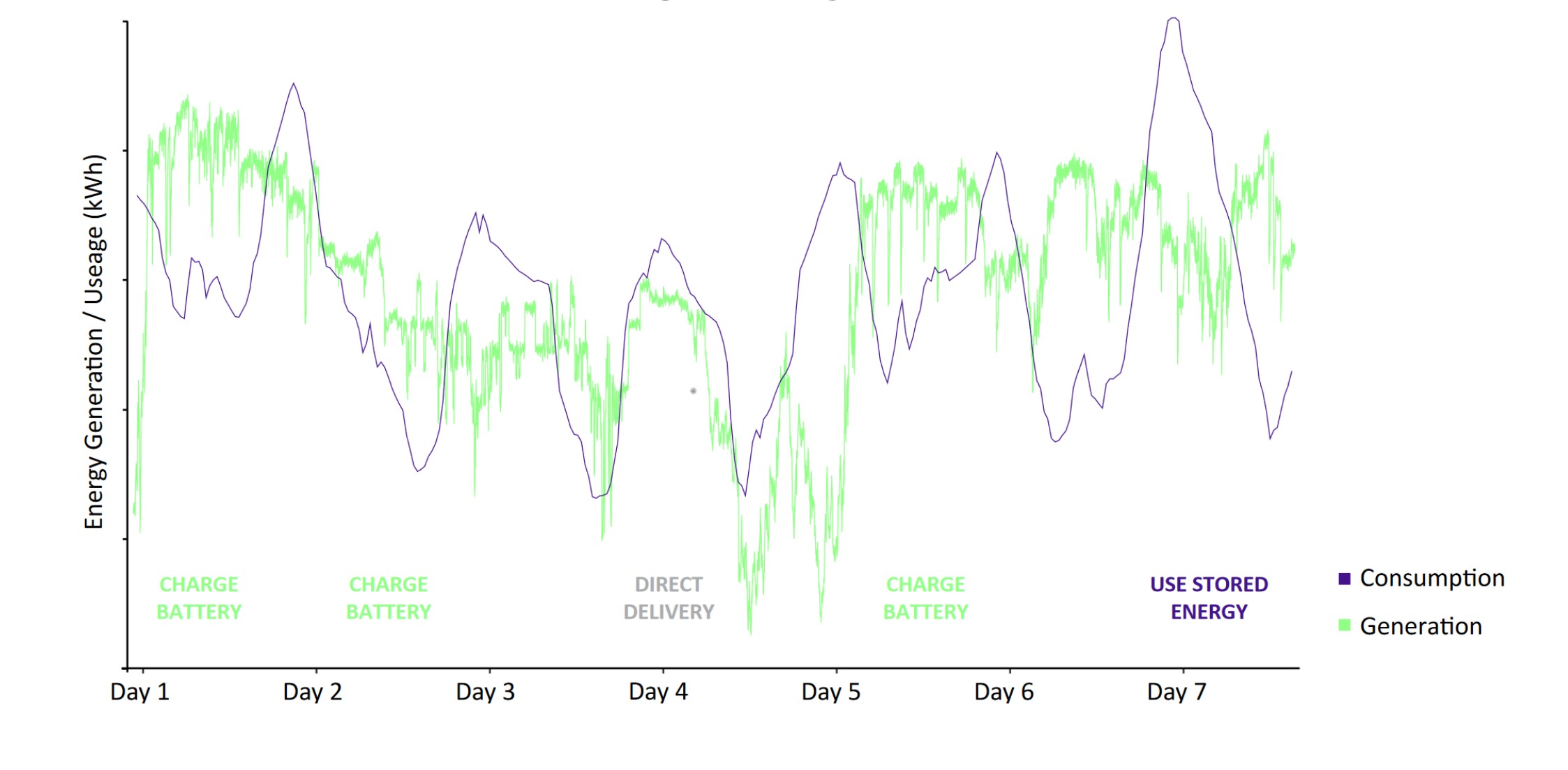
We then explored the function of a microgrid “Integrated Energy System” such as that processing and predicting consumer demand and generation in Orkney.
Such complex systems are driven by powerful models that use user data to predict future patterns of demand. Thanks to increasing use of Smart Meter devices, extremely detailed energy consumption data is becoming more available.
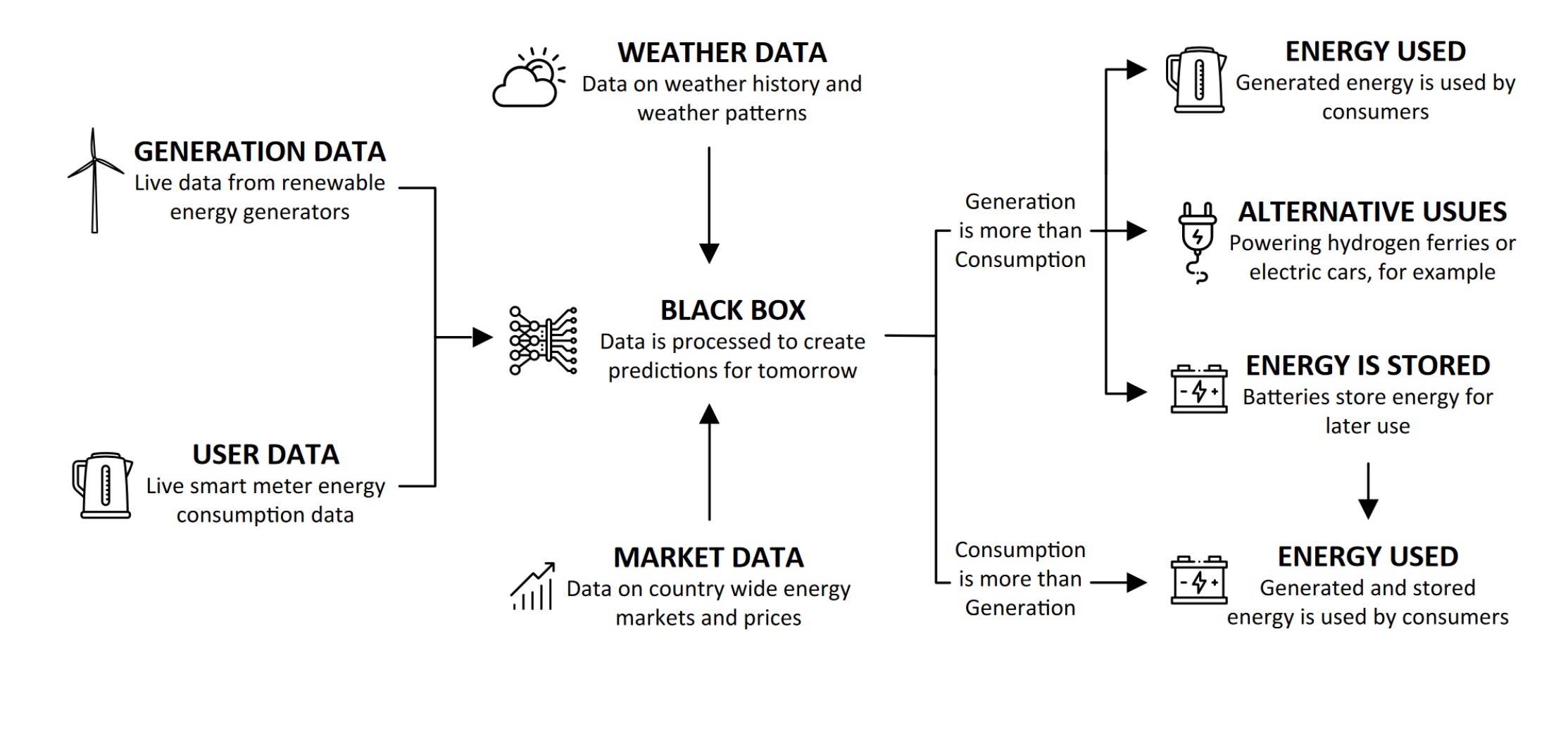
We developed our own Machine Learning model and asked it to predict consumption based on data from three sample households to understand how accurately ML might be able to predict tomorrow’s demand. What we learned whilst mapping household energy consumption data was surprising.
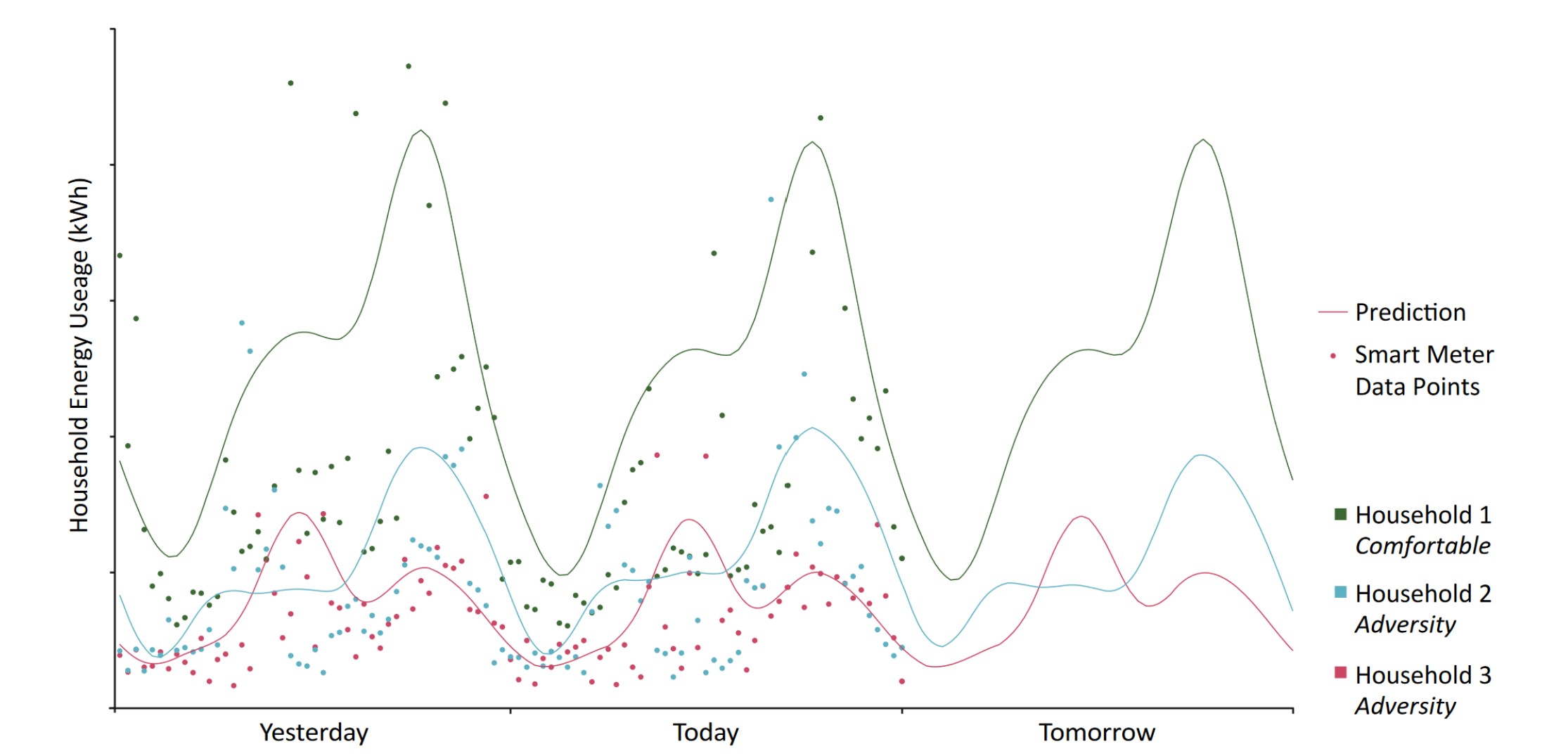
The image below shows the level of detail that can be identified from consumer usage data using developments in ML disaggregation tools. This gives deep and unexpected insights into people’s lives. In the future, this very private data could be shared with other parties such as marketing companies, landlords or even burglars.
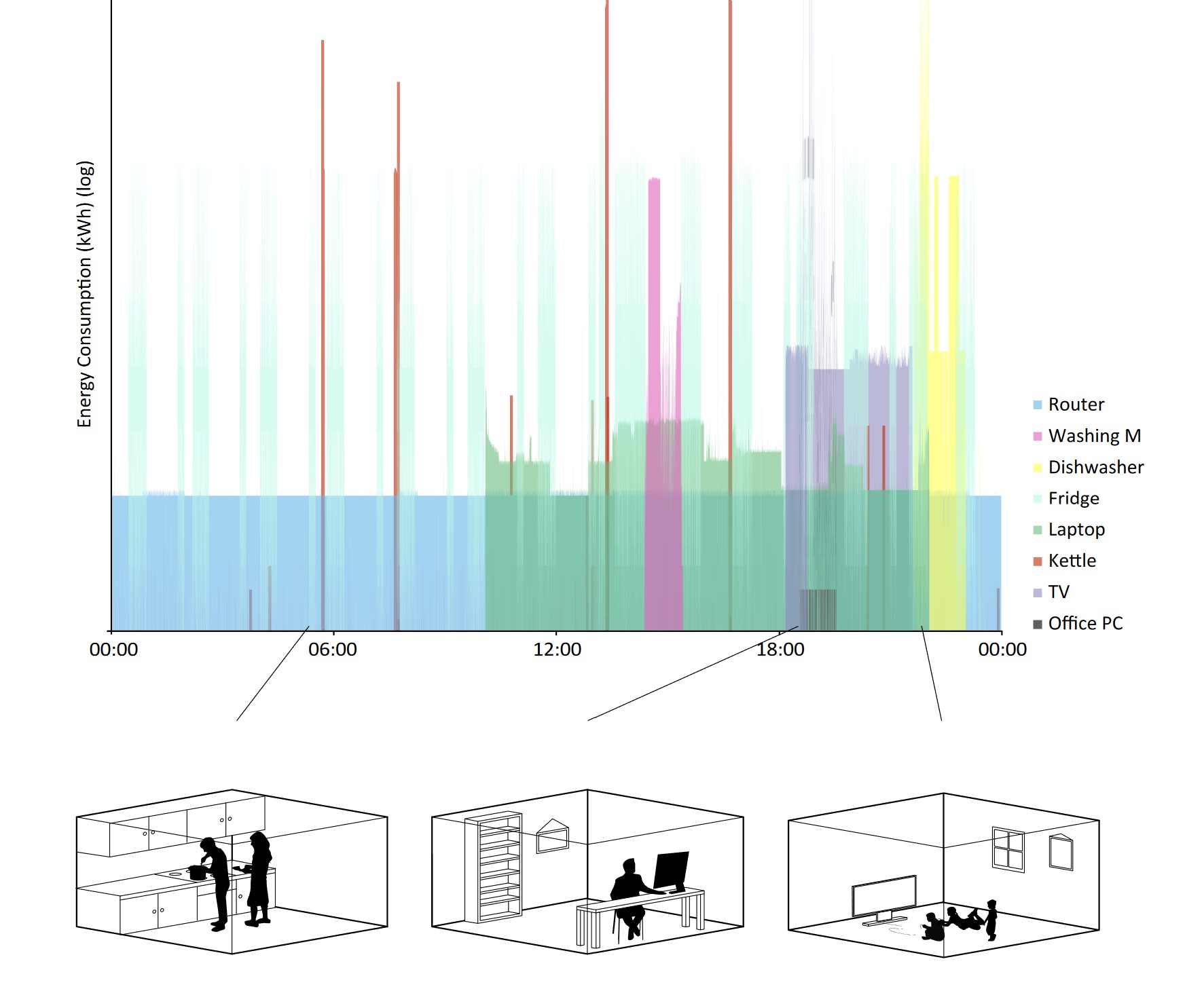
Speculative Scenario
The use of a speculative scenario helped us to imagine possible unexpected consequences of widespread implementation of such technology. We imagined the anger felt by a fictional, edge community such as that of the windy Orkney islands in the 2040s: not only does it feel like the renewable energy generated on their doorstep is all used to power and advance the megacities of the south; they’re fed up of targeted advertising perfectly tailored to their habits and weaknesses. This energy system doesn’t feel like it’s working for them and they’re coming together to make a stand.
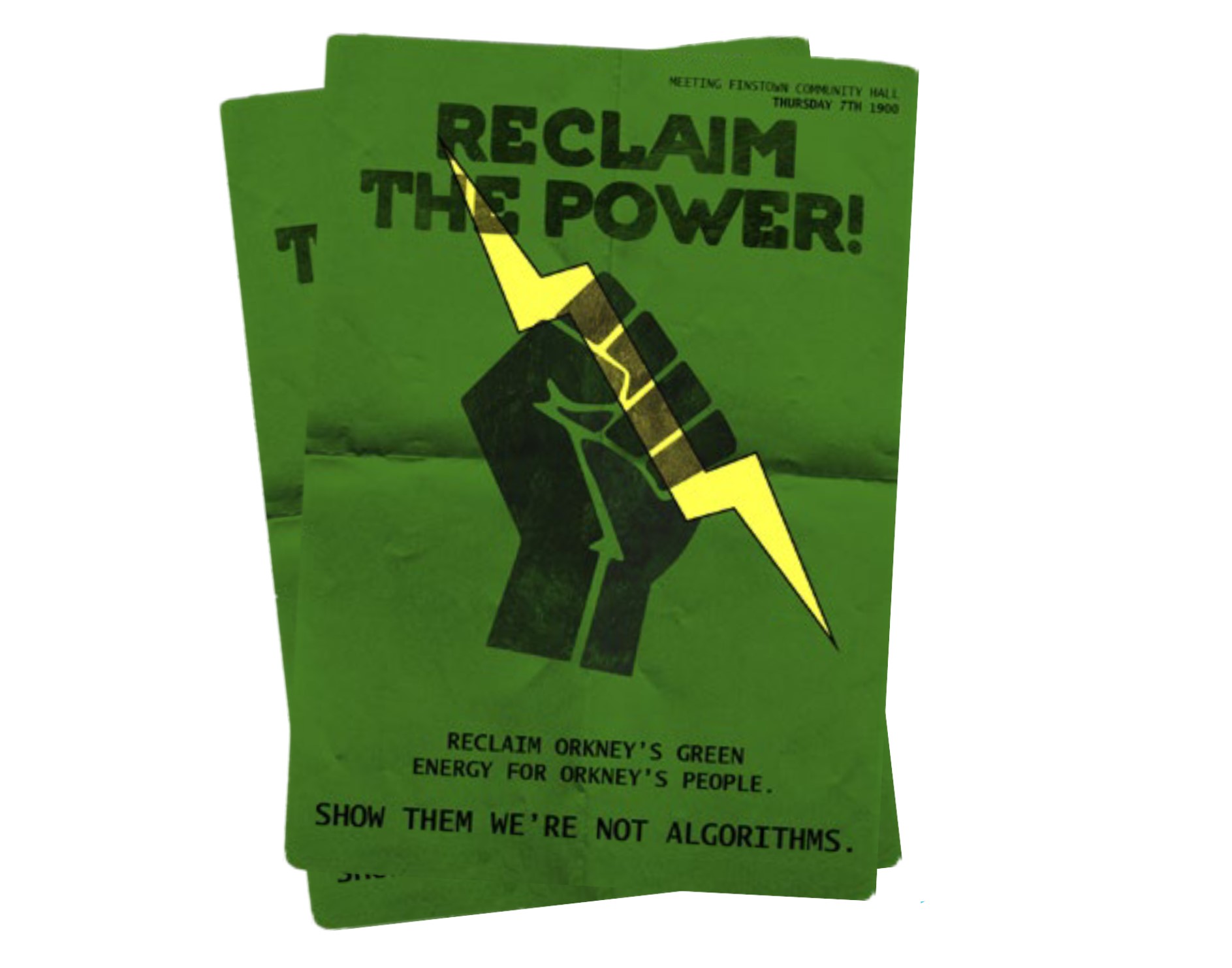
By adding a little spontaneity to their everyday routines, they realise they could impact the functionality of the black box algorithm itself. They begin to work only before dawn; boil the kettle anytime but the ad breaks; and carry out their evenings by firelight. If enough other communities join them in disrupting this data, energy sovereignty could be theirs…
Conclusion
There is an assumption that AI black boxes are always used to unfavourable ends. We wanted to explore a black box featured in hopeful visions. This project has highlighted a tension between the positive of an environmentally friendly future and the vulnerabilities opened up by the data collection required to execute this future. These systems are going to be implemented on ever larger scales and it’s vital that citizens understand the side effects of this black box. There’s no doubt that the implementation of AI will utterly transform our energy systems for the better, but the question is which version of this future do we want to create?